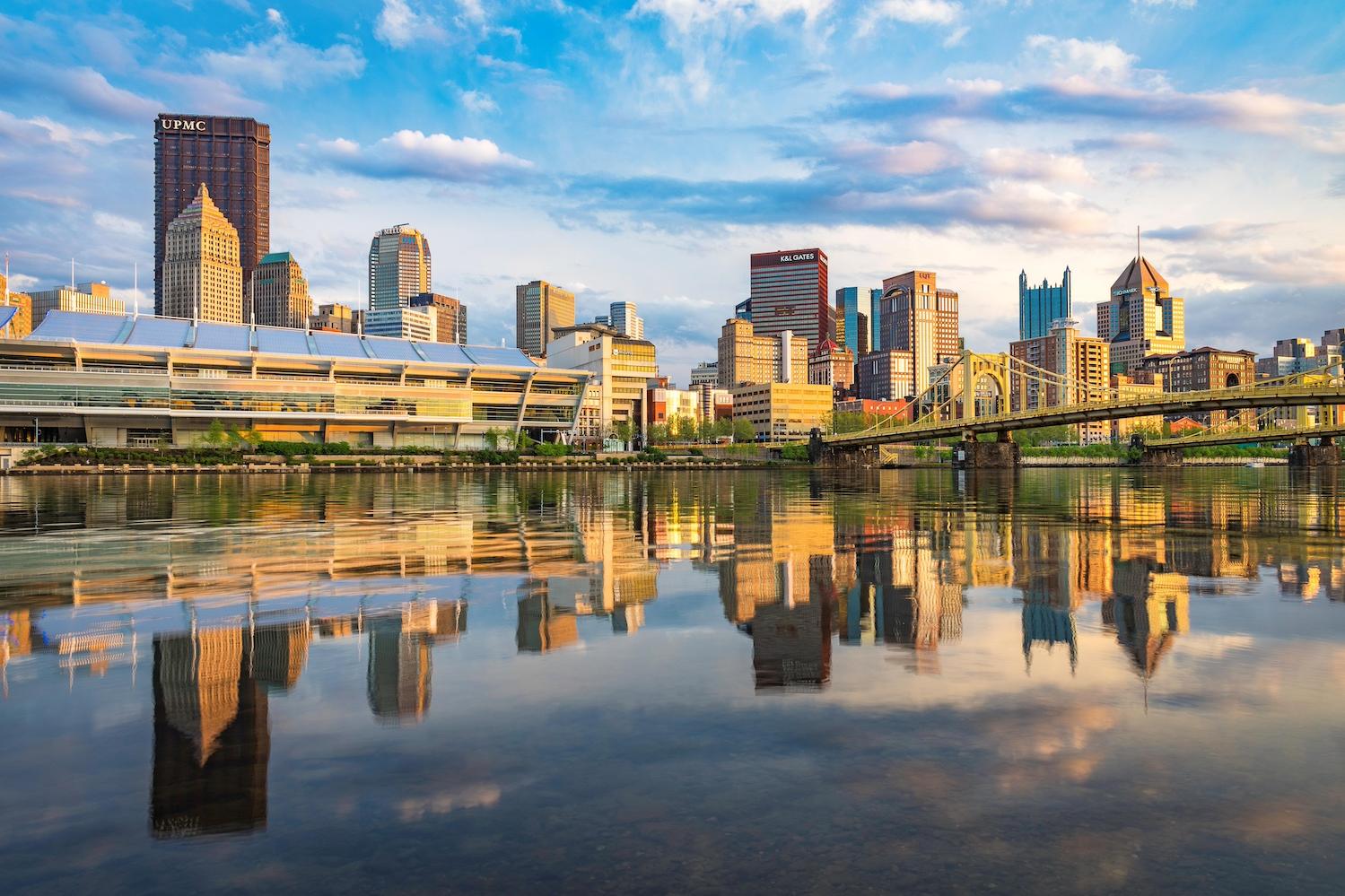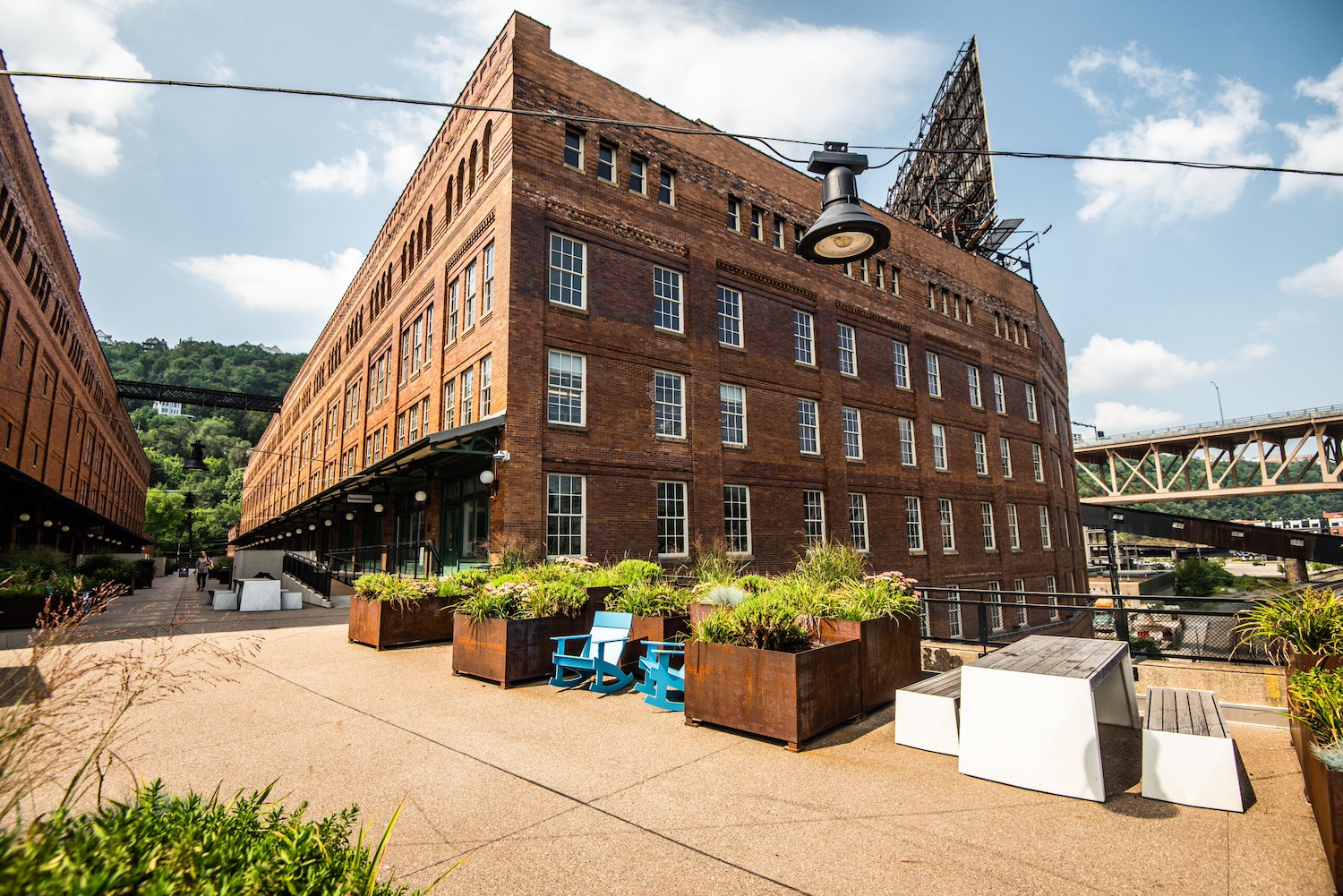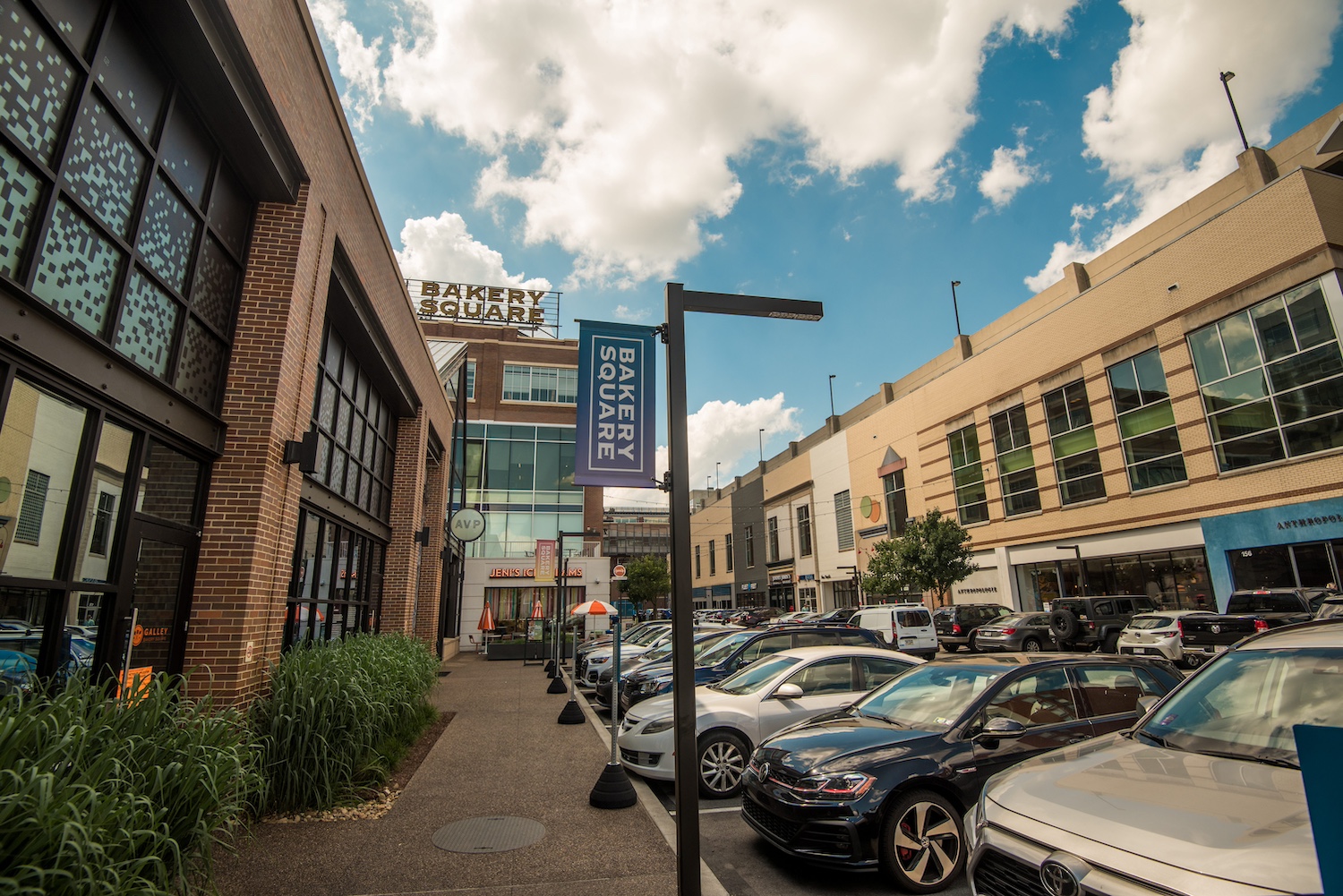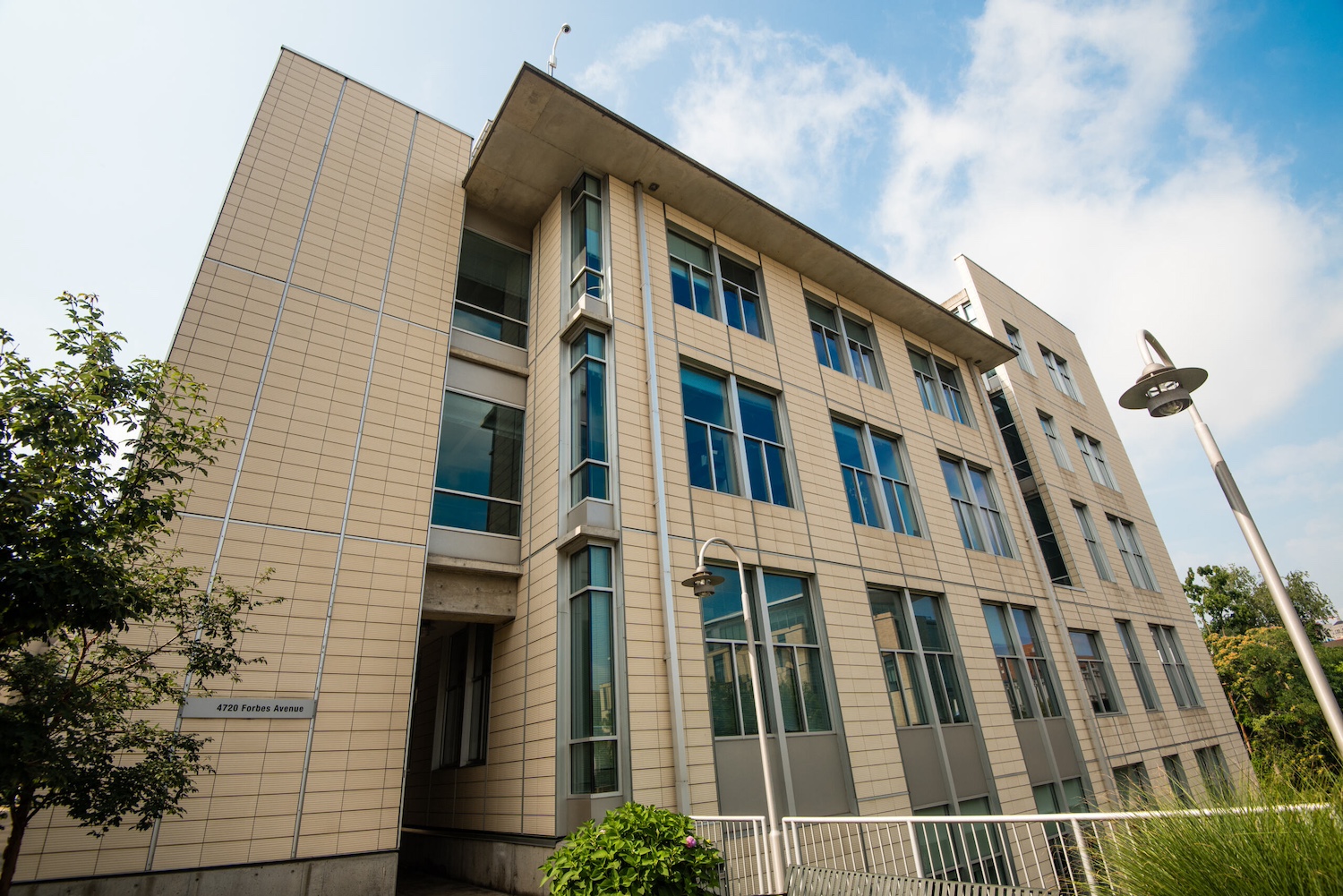
The Pittsburgh skyline, featuring the David L. Lawrence Convention Center, one of the cities most prominent green buildings (far left). (Image: JP Diroll Photography)
In an unparalleled achievement for urban sustainability efforts, a Pittsburgh district covering over 135 million square feet of commercial business space surpassed its carbon emissions reduction target six years ahead of schedule. The Pittsburgh 2030 District recently announced it achieved a 52 percent reduction in carbon emissions last year, exceeding its goal of a 50 to 65 percent reduction by 2030.
The built environment, including building operations, is responsible for a huge chunk of annual global carbon dioxide emissions, and it's still growing. The 2030 Districts Network, which the Pittsburgh district is a part of, is a collective of building industry leaders in cities in the United States and Canada committed to lessening that impact by reducing energy, water, and transportation-related building emissions. The Pittsburgh district is the largest member, representing about 14 percent of the network’s total square footage so far. Its achievement demonstrates what’s possible as every district in the collective works toward cutting carbon emissions by at least 50 percent by 2030 and reaching net zero by 2040.
Managed by the Western Pennsylvania-based nonprofit Green Building Alliance and made up of local building owners and operators, the Pittsburgh 2030 District spans over 1,300 buildings across healthcare, higher education, hospitality, technology and commercial real estate. Together, the properties reduced energy use by over 25 percent, saved $44.2 million in utility costs, and cut water use by over 33 percent — all while many businesses were returning to in-person operations after the COVID-19 pandemic.

Jenna Cramer, executive director of Green Building Alliance, credits the milestone to Pittsburgh’s legacy of reinvention. “With our strong industrial roots, revitalizing the city through sustainability, energy efficiency, and green building has been essential to our reemergence as a great place to live, work and grow,” Cramer told TriplePundit.
The Green Building Alliance recently released the Pittsburgh district’s annual progress report, which highlights energy efficiency and resiliency projects completed over the past two years.
“In 2012, we realized that most buildings we’ll have in 2030 already exist,” Cramer said. “That shifted our focus from new construction to upgrading older buildings for performance.”
District leaders attribute their success to a combination of building retrofits, clean energy adoption and policy alignment. Simple interventions like switching to LED lighting and upgrading to more efficient HVAC systems made a quick impact. “LEDs offer a fast return on investment and long-term savings,” Cramer said. “It was a no-brainer for many building owners.”
Wider electrification efforts also helped gain ground. One standout project was the complete overhaul of 411 Seventh Avenue, a century-old structure that’s now fully electric and among the district’s most efficient buildings, Cramer said.
Some buildings in the district are still in the process of transitioning away from natural gas to electricity and utilizing heat pumps and geothermal energy. For example, Phipps Conservatory and Botanical Gardens, a historic landmark covering 15 acres in Pittsburgh, is integrating geothermal systems into new buildings, aiming for full electrification.
The regional electricity grid has also grown cleaner, aided by Pennsylvania’s renewable energy portfolio standard, Cramer said. Large local businesses — including PNC Bank, BNY Mellon and Carnegie Mellon University — are committed to sourcing 100 percent of their electricity from renewables.

Public-private partnerships are at the core of the Pittsburgh district’s success. The district includes participants from K-12 schools, higher education, government, nonprofits, and private industry, many of whom meet regularly to exchange best practices.
Members also participate in wider programs to collaborate with organizations outside of the Pittsburgh 2030 District, like the Western Pennsylvania Energy Consortium, which allows its members to collectively purchase clean energy, pooling their buying power to achieve goals faster, Cramer said. The Higher Education Climate Consortium is another example. Started by Green Building Alliance, the effort brings universities in the region together to reduce emissions.
“We’ve built a peer community that creates a sense of shared commitment,” Cramer said. “The Higher Education Climate Consortium, which we started in 2008, continues to align universities on climate goals to this day.”
Green Building Alliance also provides ongoing support for Pittsburg 2030 District members through building performance reviews, educational workshops, and monthly programming to keep stakeholders informed and engaged. For the alliance, sustainability isn’t just about carbon, it’s about people.
“We were the first 2030 District to formally include indoor air quality,” Cramer told 3p. “That became especially important during the pandemic. Practices like proper ventilation and filter changes don’t just improve health, they increase building value and tenant satisfaction.”

Equity is also a part of the district’s efforts. Green Building Alliance offers technical assistance and training for lower-income communities and small businesses. A recent initiative embedded climate resilience and health priorities into neighborhood development plans, helping ensure that sustainability efforts reflect community needs.
While participating in the Pittsburgh 2030 District effort remains voluntary, local and state policies support its progress. Pennsylvania’s Act 129 utility rebates and the statewide financing program for clean energy projects on commercial properties helped unlock funds for district projects. Meanwhile, the city of Pittsburgh’s ordinance that requires non-residential buildings over 50,000 square feet to report their energy and water use brought new partners into the fold.
Federal support, especially through the Inflation Reduction Act, has been crucial, too. Though federal funding cuts and pauses raise concerns about future funds.
“It’s a challenge. Some of those opportunities are in limbo, but even without mandates, we’ve made huge progress,” Cramer said. “Data-driven solutions and cross-sector partnerships have shown the business case is real. We’ve documented $540 million in utility savings and $5.4 billion in regional investment since we started.”
Looking ahead to 2040, when the district aims to reach net-zero emissions, Green Building Alliance remains focused on innovation, collaboration and transparency.
“Every city is different, but the lessons are clear,” Cramer said. “Partnerships work, data matters and reinvention is possible.”

Gary E. Frank is a writer with more than 30 years of experience encompassing journalism, marketing, media relations, speech writing, university communications and corporate communications.














